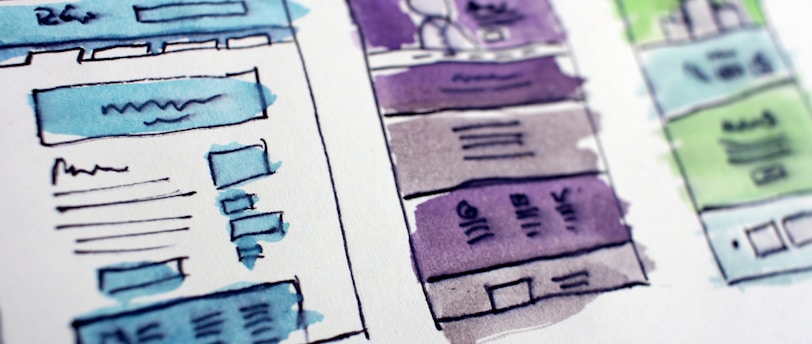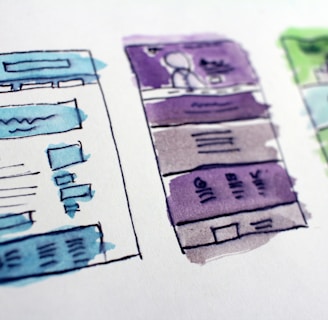Web Development in 2025: Tools, Tech Stack & Full Planning Guide to Build Phase
Explore the future of web development in 2025 with a complete guide to modern tools, tech stacks, and step-by-step planning through the build phase. Stay ahead in the evolving web landscape.
Bharath
1/10/20253 min read


Web Development in 2025: Tools, Tech Stack & Full Planning Guide to Build Phase
Web development in 2025 is faster, more efficient, and more intelligent than ever before. As user expectations grow and technology rapidly advances, developers must adapt to new tools, frameworks, and workflows to stay competitive. Whether you're launching a SaaS product, building a company site, or developing a PWA, your web development strategy in 2025 must be comprehensive, flexible, and user-centric.
In this guide, we’ll break down how to approach web development in 2025, covering the latest tech stacks, essential tools, and a complete roadmap from planning to the build phase.
Why Web Development in 2025 Is Different
Key Trends Shaping Modern Web Development
AI and automation in coding with tools like GitHub Copilot
Serverless architecture and edge computing for faster performance
Progressive Web Apps (PWAs) replacing native apps in many cases
Composable architecture for modular, scalable sites
Headless CMS and JAMstack becoming standard for content-driven platforms
Enhanced accessibility and privacy compliance (WCAG 3.0, GDPR 2.0)
Step 1: Project Planning and Strategy
Before writing code, clarity in planning defines the success of your web project.
Define Business Goals and Target Users
What problem are you solving?
Who is your primary audience?
How will the website help your business grow?
Conduct Market and Competitor Analysis
Use tools like SimilarWeb, SEMrush, or BuiltWith to study top-performing sites
Identify technology gaps, UX improvements, and traffic sources
Analyze keyword intent for SEO during content planning
Determine Key Features and Scope
Typical 2025 website features:
AI-powered search and recommendations
Personalization based on behavior and location
Voice interface support
API-driven integrations (payment, CRM, analytics)
Step 2: Choosing the Right Tech Stack for 2025
Frontend Development Tools
React 19: Now supports React Compiler and enhanced server components
Next.js 15: Powerful for SEO, edge rendering, and hybrid static/server apps
SvelteKit: Gaining traction for its performance and developer experience
Vue 4: Still widely used for reactive and modular web apps
Backend Technologies
Node.js + NestJS: Structured, TypeScript-first backend framework
Deno: A secure runtime alternative to Node with modern standards
Go (Golang): High performance for microservices and APIs
Python (FastAPI): Great for AI integration and data-heavy apps
Databases
PostgreSQL + Prisma ORM: For strong relational data modeling
MongoDB Atlas: Scalable NoSQL for flexible schema
PlanetScale: Serverless MySQL with Git-style branching
CMS & Headless Platforms
Strapi, Sanity, or Contentful for headless CMS
Builder.io or Webflow Dev Mode for visual + code collaboration
Integrated with frontend via GraphQL or REST APIs
Step 3: Designing for UX in 2025
Design Principles
Mobile-first and AI-enhanced responsiveness
Inclusive and accessible interfaces
Motion design for intuitive feedback
Minimalism with data-driven micro-interactions
Popular Tools for Web Design
Figma AI: Predicts layout improvements and accessibility issues
Framer: Design-to-code prototyping with real React output
Zeroheight: Documentation hub for design systems
Step 4: Development Workflow and Build Phase
Once the groundwork is laid, the build phase begins with structured workflows to ensure scalable and secure code delivery.
Development Process
Setup Environment
Containerization using Docker
Version control via Git + GitHub/GitLab
CI/CD pipelines with Vercel, Netlify, or GitHub Actions
Frontend Development
Component-based architecture (React, Svelte, Vue)
Tailwind CSS 4.0 or CSS Modules for styling
Motion and animation libraries (Framer Motion, GSAP)
Backend & API Integration
REST or GraphQL APIs
Authentication with Clerk, Auth0, or NextAuth
Real-time features using WebSockets or Firebase
Testing & QA
Unit Testing: Jest, Vitest
Integration Testing: Playwright, Cypress
Linting & formatting with ESLint and Prettier
Step 5: Performance Optimization & SEO
A performant site in 2025 is not a luxury—it's a necessity for ranking and retention.
Key Performance Tactics
Lazy loading images and third-party scripts
Edge rendering with CDNs like Cloudflare and Vercel Edge Functions
Static generation where possible (SSG + ISR with Next.js)
SEO-Readiness
Semantic HTML5 with accessible ARIA roles
Meta tags, schema markup, and Open Graph data
Optimized Core Web Vitals: LCP, FID, CLS
AI-generated meta descriptions and titles using GPT-based tools
Step 6: Deployment and Hosting Options
In 2025, deployment is seamless thanks to modern platforms:
Top Hosting Solutions
Vercel: Best for Next.js and frontend-first apps
Netlify: Popular with JAMstack and static sites
Cloudflare Pages: Fast, globally distributed, and serverless
Render or Fly.io: For backend-heavy or containerized apps
Monitoring and Maintenance
Error tracking: Sentry, LogRocket
Uptime monitoring: StatusCake, Pingdom
Analytics: Plausible, PostHog, Google Analytics 4
Final Thoughts: Building Future-Proof Websites in 2025
Web development in 2025 demands a blend of modern tools, future-forward design, and agile planning. The shift toward AI-driven development, modular architectures, and serverless infrastructure is empowering teams to build better, faster, and more scalable experiences.
By following a structured approach—from ideation to the build phase—you can ensure your website not only meets current expectations but is also ready for what’s next.